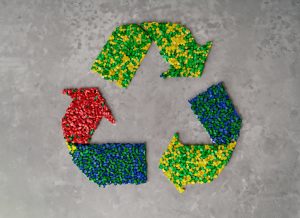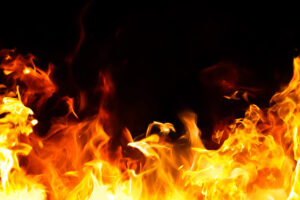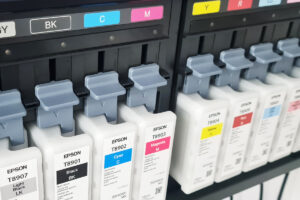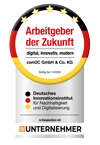Presenting an advertising message, directing streams of visitors or providing orientation - a floor sticker can serve many purposes. Floor graphics use cheap advertising space, which is usually still free even when there is a lack of space.
The printed image of floor stickers is exposed to high mechanical loads - the printing material must be correspondingly hard-wearing. Floor advertising is usually placed effectively in the middle of walkways. So the message is almost impossible to miss; at the same time, the graphics are trampled on in the truest sense of the word. To ensure that no dangerous situation is created, the print medium or the protective laminate must be non-slip. A rough and non-slip surface protects the print and reduces the risk of slipping and tripping.
The slip resistance of a print medium can be easily understood with the DIN standard 51130 and the corresponding R value.
DIN 51130 for classifying the anti-slip properties of floor coverings
| R value | degrees |
| R 9 | 6° - 10° |
| R10 | >10° - 19° |
| R11 | >19° - 27° |
| R12 | >27°-35° |
| R13 | >35° |
The industrial standard 51130 regulates the slip resistance for floors and floor coverings in general work areas. For barefoot areas such as swimming pools, there is still DIN 51097.
DIN 51130 is divided into five slip resistance classes.
The classification into the slip resistance values R9 to R13 is based on a standardized test in the laboratory. A specified amount of a special motor oil is applied to the floor covering to be tested. Wearing standardized work shoes, the test person walks across the surface, which is raised in a test frame. The point at which slip resistance is no longer given is then determined on the increasingly steep ramp. This number of degrees must be determined by two examiners.
R9 is therefore the lowest slip resistance class and defines the minimum requirement for slip resistance in public spaces. Surfaces of this class are suitable for interior areas of public entrances, for sales rooms or canteens.
In the class R10 living and working areas, entrance areas inside and outside, communal bathrooms, teaching kitchens, playgrounds, machine rooms for woodworking and garages without the influence of the weather.
The slip resistance class R11 is required as a medium class with higher coefficient of static friction for outdoor entrance areas, barefoot areas of swimming pools and working environments with water and mud.
R12 comes into play in fire stations, large hospital kitchens, and manufacturing facilities that handle fatty foods or slippery fabrics.
The highest slip resistance class R13 can be found, for example, in production rooms with large amounts of fat, food processing rooms or in slaughterhouses.
Indoor and outdoor floor bonding

In the field of self-adhesive print media for floor stickers, there is a wide variety on the market. Some media are only suitable for indoor use, while others have also proven themselves outdoors. In addition to the different slip resistance classes, there are other material properties that differ. The usually semi-permanent adhesive has the right adhesive strength depending on the surface to be bonded. This is slightly higher on rough surfaces such as carpets than on very smooth (e.g. laminate) floors.
The intended period of use of a floor sticker is taken into account when selecting the print media. For short-term indoor use, such as during an event, a cheap floor graphics sticker without a protective laminate is sufficient. If bonding is planned outdoors under the influence of the weather, a suitable, waterproof protective laminate must be used.
A special film is suitable for asphalt and other large-pored outdoor floor coverings, which can be bonded very well to rough surfaces with the help of heat, but can still be removed again easily.
A fire protection certificate is required for the use of slip-resistant floor stickers at trade fairs and in public spaces.
After use, floor graphics stickers can be removed without leaving any residue.
Think outside the box: most floor graphics media can not only be glued to the floor, but also wonderfully to smooth walls and, of course, to stair steps.

Here it goes to Floor Graphics range from com2C
For short-term use without protective laminate:
FloorGraphicTex 350 LUVESS MW adh
FloorGraphics 200 LUVESS MW air rem adh
Protective laminate for long-term use:
Protect 120 PVC Gravel Plus FR







